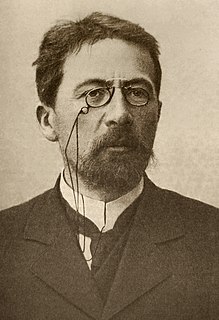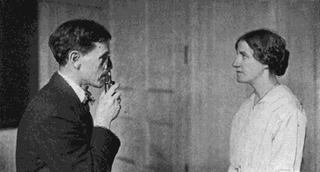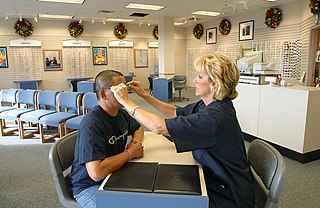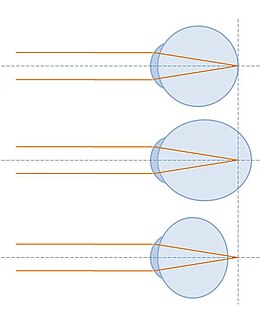Related Research Articles
A lens is a transmissive optical device which focuses or disperses a light beam by means of refraction. A simple lens consists of a single piece of transparent material, while a compound lens consists of several simple lenses (elements), usually arranged along a common axis. Lenses are made from materials such as glass or plastic, and are ground and polished or molded to a desired shape. A lens can focus light to form an image, unlike a prism, which refracts light without focusing. Devices that similarly focus or disperse waves and radiation other than visible light are also called lenses, such as microwave lenses, electron lenses, acoustic lenses, or explosive lenses.

A corrective lens is a lens that is typically worn in front of the eye to improve daily vision. The most common use is to treat refractive errors: myopia, hypermetropia, astigmatism, and presbyopia. Glasses or "spectacles" are worn on the face a short distance in front of the eye. Contact lenses are worn directly on the surface of the eye. Intraocular lenses are surgically implanted most commonly after cataract removal but can be used for purely refractive purposes.

Glasses, also known as eyeglasses or spectacles, are vision eyewear, with lenses mounted in a frame that holds them in front of a person's eyes, typically utilizing a bridge over the nose and hinged arms that rest over the ears.

Contact lenses, or simply contacts, are thin lenses placed directly on the surface of the eyes. Contact lenses are ocular prosthetic devices used by over 150 million people worldwide, and they can be worn to correct vision or for cosmetic or therapeutic reasons. In 2010, the worldwide market for contact lenses was estimated at $6.1 billion, while the US soft lens market was estimated at $2.1 billion. Multiple analysts estimated that the global market for contact lenses would reach $11.7 billion by 2015. As of 2010, the average age of contact lens wearers globally was 31 years old, and two-thirds of wearers were female.
A dioptre or diopter is a unit of measurement with dimension of reciprocal length, equivalent to one reciprocal metre, 1 dioptre = 1 m−1. It is normally used to express the optical power of a lens or curved mirror, which is a physical quantity equal to the reciprocal of the focal length, expressed in metres. For example, a 3-dioptre lens brings parallel rays of light to focus at 1⁄3 metre. A flat window has an optical power of zero dioptres, as it does not cause light to converge or diverge. Dioptres are also sometimes used for other reciprocals of distance, particularly radii of curvature and the vergence of optical beams.

Sunglasses or sun glasses are a form of protective eyewear designed primarily to prevent bright sunlight and high-energy visible light from damaging or discomforting the eyes. They can sometimes also function as a visual aid, as variously termed spectacles or glasses exist, featuring lenses that are colored, polarized or darkened. In the early 20th century, they were also known as sun cheaters.

Pince-nez is a style of glasses, popular in the late 19th and early 20th centuries, that are supported without earpieces, by pinching the bridge of the nose. The name comes from French pincer, "to pinch", and nez, "nose".

The Bates method is an ineffective and potentially dangerous alternative therapy aimed at improving eyesight. Eye-care physician William Horatio Bates (1860–1931) held the erroneous belief that the extraocular muscles effected changes in focus and that "mental strain" caused abnormal action of these muscles; hence he believed that relieving such "strain" would cure defective vision. In 1952, optometry professor Elwin Marg wrote of Bates, "Most of his claims and almost all of his theories have been considered false by practically all visual scientists."

An optician, or dispensing optician, is a technical practitioner who designs, fits and dispenses lenses for the correction of a person's vision. Opticians determine the specifications of various ophthalmic appliances that will give the necessary correction to a person's eyesight. Some registered or licensed opticians also design and fit special appliances to correct cosmetic, traumatic or anatomical defects. These devices are called shells or artificial eyes. Other registered or licensed opticians manufacture lenses to their own specifications and design and manufacture spectacle frames and other devices.

Strabismus is a vision disorder in which the eyes do not properly align with each other when looking at an object. The eye that is focused on an object can alternate. The condition may be present occasionally or constantly. If present during a large part of childhood, it may result in amblyopia or lazy eyes and loss of depth perception. If onset is during adulthood, it is more likely to result in double vision.

Refractive error, also known as refraction error, is a problem with focusing light accurately on the retina due to the shape of the eye and or cornea. The most common types of refractive error are near-sightedness, far-sightedness, astigmatism, and presbyopia. Near-sightedness results in far away objects being blurry, far-sightedness and presbyopia result in close objects being blurry, and astigmatism causes objects to appear stretched out or blurry. Other symptoms may include double vision, headaches, and eye strain.
Orthokeratology refers to the use of gas-permeable contact lenses that temporarily reshape the cornea to reduce refractive errors such as myopia, hyperopia and astigmatism.

Eye protection is protective gear for the eyes, and sometimes face, designed to reduce the risk of injury. Examples of risks requiring eye protection can include: impact from particles or debris, light or radiation, wind blast, heat, sea spray or impact from some type of ball or puck used in sports.
Essilor International is a French-based international ophthalmic optics company that designs, manufactures and markets lenses to correct or protect eyesight. Its headquarters is in Charenton-le-Pont, France.

A lenticular lens is an array of lenses, designed so that when viewed from slightly different angles, different parts of the image underneath are shown. The most common example is the lenses used in lenticular printing, where the technology is used to give an illusion of depth, or to make images that appear to change or move as the image is viewed from different angles.

Aviator sunglasses are a style of sunglasses that were developed by a group of American firms. The original Bausch & Lomb design is now commercially marketed as Ray-Ban Aviators, although other manufacturers also produce aviator-style sunglasses.

Emmetropia is the state of vision in which a faraway object at infinity is in sharp focus with the eye lens in a neutral or relaxed state. That condition of the normal eye is achieved when the refractive power of the cornea and eye lens and the axial length of the eye balance out, which focuses rays exactly on the retina, resulting in perfectly sharp distance vision. A human eye in a state of emmetropia requires no corrective lenses for distance; the vision scores well on a visual acuity test.
Adjustable focus eyeglasses are eyeglasses with an adjustable focal length. They compensate for refractive errors by providing variable focusing, allowing users to adjust them for desired distance or prescription, or both.
Vision of humans and other organisms depends on several organs such as the lens of the eye, and any vision correcting devices, which use optics to focus the image.
The American Optical Company, also known as AO Eyewear, is an American company, it designs, manufactures and markets eyewear, primarily sunglasses. Founded in 1869 as a merger of spectacle makers in Southbridge, Massachusetts it has been in existence and operating for over 150 years. Spectacle-making had been established in the town in 1826 when William Beecher had set up a jewelry business there with an apprentice, Robert H. Cole. Cole subsequently bought the business and became the largest shareholder and first president of the American Optical Company. When he retired in 1891 and Beecher died in 1892, the volume of production in the town was about two million frames and a million pairs of lenses per year. In March 2020, STATE Optical Company, a division of Europa Eyewear, acquired American Optical and moved equipment and production to their facility in Chicago.
References
- ↑ "Centre for Vision in the Developing World – Delivering glasses to 2 billion people who lack access to conventional eye care services". www.cvdw.org. Retrieved 28 October 2021.
- ↑ Tracey Barnett (9 February 2008). "Top design for the truly needy". The New Zealand Herald .
- ↑ Nicholas Thompson (12 December 2002). "Self-Adjusted Glasses Could Be Boon to Africa". The New York Times .
- ↑ "Centre for Vision in the Developing World – Delivering glasses to 2 billion people who lack access to conventional eye care services". cvdw.org. Retrieved 28 October 2021.
- ↑ "Better Vision for the Poor (SSIR)". ssir.org. Retrieved 28 October 2021.
- ↑ Esther Addley (22 December 2008). "Inventor's 2020 vision: to help 1bn of the world's poorest see better". The Guardian .
- ↑ Balls, Katy. "Watch: Andrew Neil skewers Oxford professor over hate crime claim | The Spectator". www.spectator.co.uk. Retrieved 28 October 2021.
- ↑ "Home Secretary speech treated as 'hate incident' by police" . The Independent. 12 January 2017. Archived from the original on 17 June 2022. Retrieved 28 October 2021.
- ↑ "Police treat home secretary speech as 'hate incident'". BBC News. 12 January 2017. Retrieved 28 October 2021.
- ↑ "Campaigners considering legal action to retain EU citizenship". 17 January 2020.